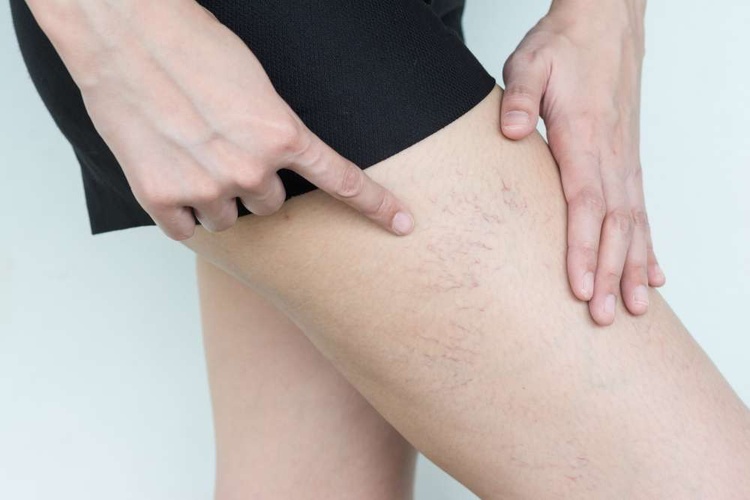5 Circulatory Problems in Legs That Signal Trouble
Circulatory issues in the legs are common and can be a sign of underlying health problems that need timely attention. Recognizing early warning signs, understanding the causes, and knowing when to seek professional help can significantly improve outcomes and prevent serious complications. The circulatory system plays a vital role in transporting oxygen, nutrients, and waste products throughout the body, and any interruption to this flow can have serious consequences. This article delves into the warning signs of circulatory problems in the legs, their potential risks, and the treatments available to ensure better vascular health.

Understanding Circulatory Problems in the Legs
Circulatory problems in the legs occur when blood flow is impaired, leading to various symptoms and potential health risks. These issues can range from minor discomfort to severe conditions that require immediate medical attention. Common causes include atherosclerosis, blood clots, peripheral artery disease (PAD), and venous insufficiency. Recognizing the signs of these problems is the first step in addressing them effectively.
5 Warning Signs You Shouldn’t Ignore
-
Swelling (Edema): Persistent swelling in one or both legs can indicate poor circulation. This occurs when fluid accumulates in the tissues due to inadequate blood flow or lymphatic system issues.
-
Varicose Veins: These enlarged, twisted veins are often visible through the skin and can cause aching or discomfort. While sometimes considered cosmetic, they can signal underlying circulatory problems.
-
Pain or Cramping: Leg pain, especially during exercise or walking (claudication), can be a sign of peripheral artery disease. This pain typically subsides with rest but returns with activity.
-
Skin Changes: Discoloration, particularly a bluish or purplish tint, dry or thin skin, or slow-healing wounds on the legs can indicate poor circulation.
-
Cold Feet or Legs: Consistently cold extremities, especially when compared to other parts of the body, may suggest reduced blood flow to the legs.
Risks of Ignoring Circulatory Issues
Neglecting circulatory problems in the legs can lead to serious health complications:
-
Deep Vein Thrombosis (DVT): Blood clots that form in deep veins can break loose and travel to the lungs, causing a potentially life-threatening pulmonary embolism.
-
Chronic Venous Insufficiency: This condition can lead to skin changes, ulcers, and persistent leg pain.
-
Peripheral Artery Disease Progression: Untreated PAD can result in critical limb ischemia, potentially leading to tissue death and, in severe cases, amputation.
-
Increased Risk of Heart Attack and Stroke: Circulatory problems in the legs often indicate systemic vascular issues that can affect the heart and brain.
-
Reduced Quality of Life: Chronic pain, limited mobility, and the psychological impact of visible vein problems can significantly affect daily life and overall well-being.
When to See a Doctor
Seeking medical attention is crucial if you experience:
-
Sudden, severe leg pain or swelling
-
Skin that is cool to the touch, pale, or changes color
-
Numbness or weakness in the legs
-
Wounds on the legs that don’t heal or heal very slowly
-
Persistent leg pain that interferes with daily activities
-
Varicose veins that become painful, inflamed, or bleed
Early intervention can prevent the progression of circulatory problems and reduce the risk of serious complications.
Tips for Healthy Leg Circulation
Maintaining good leg circulation is essential for overall health. Here are some strategies to improve and maintain healthy blood flow in your legs:
-
Regular Exercise: Engage in activities that promote leg movement, such as walking, swimming, or cycling.
-
Maintain a Healthy Weight: Excess weight can put additional pressure on your veins and arteries.
-
Quit Smoking: Smoking damages blood vessels and increases the risk of circulatory problems.
-
Elevate Your Legs: When resting, elevate your legs above heart level to promote blood flow back to the heart.
-
Stay Hydrated: Proper hydration helps maintain blood volume and promotes good circulation.
-
Wear Compression Stockings: These can help improve blood flow in the legs, especially for those who stand or sit for long periods.
-
Manage Underlying Conditions: Control conditions like diabetes and high blood pressure, which can affect circulation.
By understanding the signs of circulatory problems in the legs and taking proactive steps to maintain vascular health, individuals can significantly reduce their risk of developing serious complications. Regular check-ups with a healthcare provider, especially for those with risk factors or existing symptoms, are essential for early detection and management of circulatory issues.
This article is for informational purposes only and should not be considered medical advice. Please consult a qualified healthcare professional for personalized guidance and treatment.




